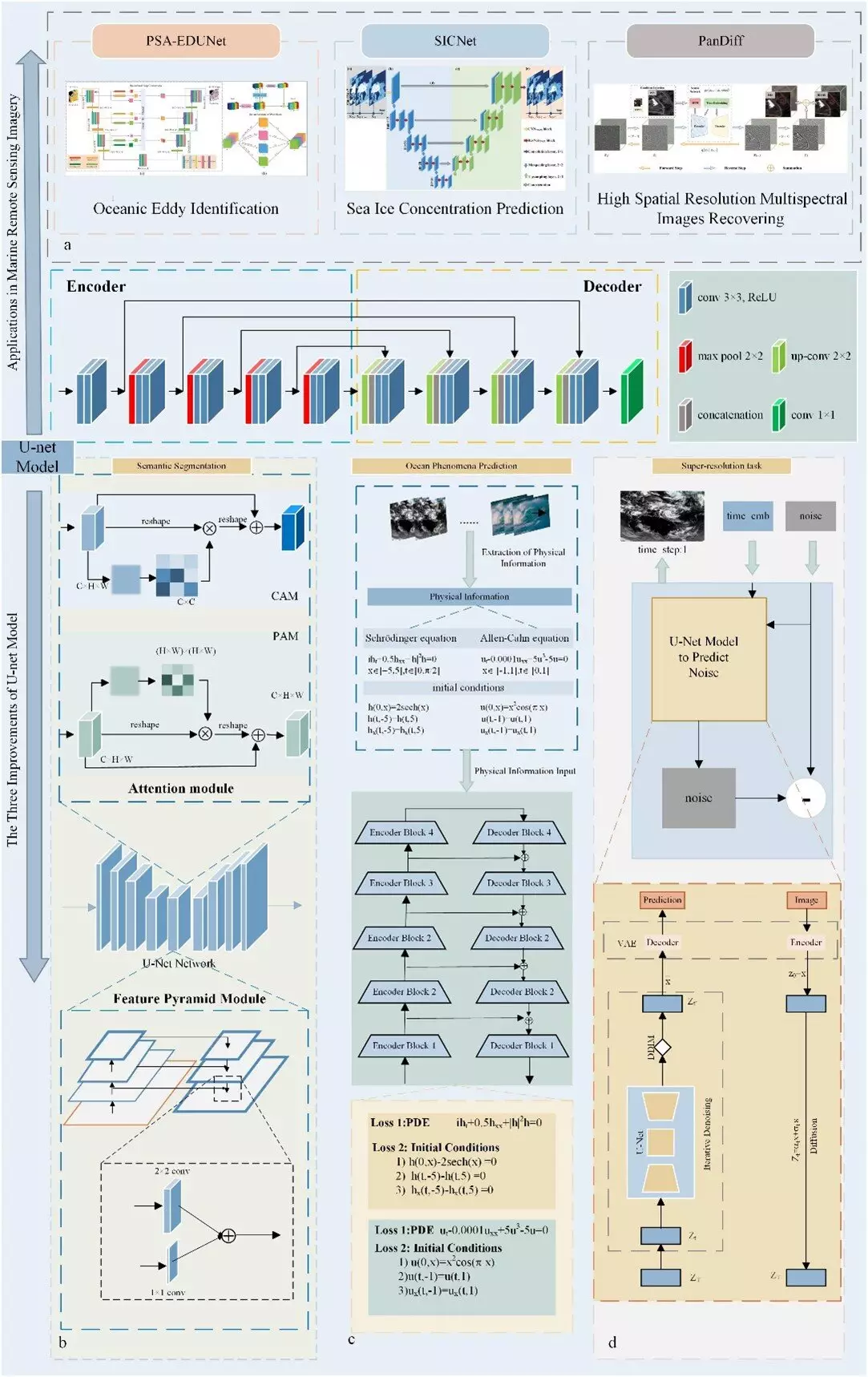The intersection of artificial intelligence (AI) and environmental science has birthed numerous innovations, one of which is the U-Net convolutional neural network (CNN). Originally designed for medical image segmentation, its adaptation for ocean remote sensing is a promising frontier that invites both exploration and critique. Recent scholarly articles, particularly one published in the Journal of Remote Sensing, suggest that while U-Net holds significant potential for oceanographic applications, profound advancements in its architecture and functionality are imperative. This article delves into those challenges and the possible pathways for improvement.
At its core, U-Net excels in separating and identifying distinct elements within an image, a quality that positions it favorably for oceanographic tasks. The framework’s architecture, known for its simplicity and efficiency, provides a solid foundation for segmentation tasks. For instance, distinguishing between open water and various ice formations is crucial for researchers aiming to monitor climate change and its impacts on polar regions. However, despite its strengths, the U-Net model is currently ill-equipped to meet the specific requirements of ocean monitoring fully. Key areas of enhancement include segmentation capabilities, predictive accuracy, and image quality through super-resolution techniques, each of which plays a pivotal role in the model’s effectiveness.
Segmentation: The Key to Precision
Segmentation tasks are where U-Net’s performance can fundamentally improve. Accurately categorizing each pixel in an image is not just a challenge but a necessity for recognizing small objects in vast oceanic environments. Integrating advanced mechanisms, such as attention models, can empower U-Net to better discern between similar textures and colors in images taken from considerable distances. This capability is essential not only for identifying different types of marine ice but also for the detection of small vessels that could carry ecological or economic importance. By enhancing segmentation functionalities, researchers could leverage U-Net to produce more reliable datasets that inform decision-making on oceanic policy and conservation efforts.
In tandem with segmentation, forecasting represents another critical function requiring refinement. Effective ocean remote sensing often depends on the ability to predict future states based on current data. The Sea Ice Prediction Network (SIPNet) is a notable success story in this arena, employing a blend of U-Net and a distinctive encoder-decoder architecture. Such models utilize historical data to produce forecasts with impressively low margins of error, particularly when complemented by temporal-spatial attention modules. This methodology illustrates the robust capabilities of U-Net when coupled with well-defined data sequences. However, the architecture still needs further enhancement to accommodate a broader range of forecasting tasks, making it more versatile and applicable across multiple oceanographic scenarios.
The efficacy of U-Net is also limited by image quality issues, particularly blurriness stemming from noise in the data. This challenge directly affects the model’s ability to extract meaningful features from images that are paramount for accurate analysis. Researchers have proposed integrating diffusion models to reduce these imperfections. A promising approach involves leveraging PanDiff, which merges high-resolution panchromatic images with low-resolution multispectral data to reconstruct clearer images. Such integrated techniques could amplify U-Net’s performance in discerning fine details of marine environments, therefore contributing to more precise monitoring of ecosystems.
Despite current shortcomings, the U-Net model’s inherent strengths—its transparent architectural framework and strong fitting capabilities—position it as a favored tool among researchers in ocean remote sensing. The ongoing exploration of synergistic approaches, where U-Net is combined with other innovative systems, may yield breakthrough results beneficial for environmental science. It is this operational adaptation that has the potential to bridge the gap between the model’s existing capabilities and the high demands of oceanographic research.
As the realm of ocean remote sensing continues to evolve, so too must the technologies involved in its advancement. U-Net holds great promise, yet significant improvements are essential for it to fully serve the needs of scientists focused on understanding and preserving our oceans. By addressing segmentation, forecasting, and image quality through innovative methodologies, the research community can elevate U-Net’s performance, ultimately leading to richer insights into one of the Earth’s most vital resources.


Leave a Reply